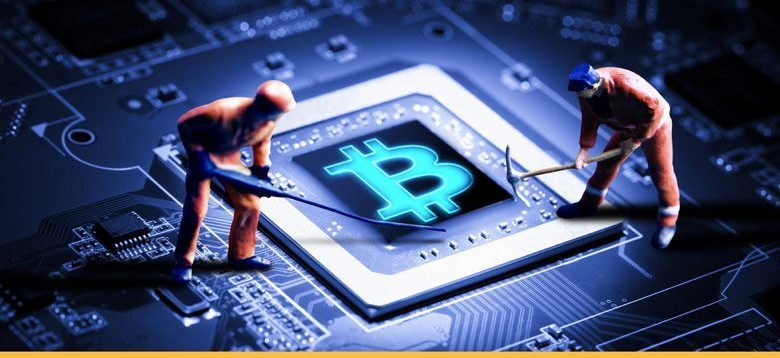In many ways, those who mine Bitcoin are similar to the people who once mined for gold in places such as California and Alaska. However, instead of seeking their fortune by mining precious metals found in the ground, they mine for digital gold. They do this by solving a puzzle through the use of powerful computer systems. Gold prospectors would exchange the metal that they found for dollars. Likewise, Bitcoin miners can exchange Bitcoins that they have mined for dollars or euros or any other currency they would like. In this Bitcoin mining tutorial, we will describe how to mine for Bitcoins and everything that you need to know about the process.
What Is Bitcoin And Why You Want To Mine It?
The first question you may be asking yourself is what exactly is Bitcoin and why you would want to mine it. Bitcoin is a digital currency (also known as a cryptocurrency) that exists only in computer code. However, it can be used just like standard currencies, such as dollars and euros. You can use it to make purchases, as a store of value or as an investment. Every Bitcoin has an address, which is a long string of numbers and letters that identifies it in transactions. Each Bitcoin has a private key, which is also a string of numbers and letters that only the owner of the Bitcoin knows. That secures the Bitcoin in what we commonly referred to as a digital wallet. While these strings of numbers and letters may look like gobbledygook, they are quite valuable. At the time of this writing, the price of a single Bitcoin is more than $10,700. While the price of Bitcoin can fluctuate wildly up and down, many financial experts are very bullish on its long-term outlook. Wall Street legend, Tim Draper, expects that one Bitcoin will be worth $250,000 sometime in the future. However, famed software entrepreneur, John McAfee, predicts that the price of Bitcoin will one day rise to $1 million per coin. Unlike traditional currencies which governments print while maintaining tight control over them, a mining process that no one is controlling created Bitcoin.
What Bitcoin Miners Do?
Semantically, it is not correct to call what Bitcoin miners do “mining.” Unlike those who mine for precious metals underground or mine through large amounts of computer data to analyze it, Bitcoin miners do not mine for anything. Instead, in exchange for receiving Bitcoins as a reward, they perform a computational task. This task is called a proof of work (PoW). The reward is currently 12.5 Bitcoins (around $133,750), which is given out about every 10 minutes. To receive it, miners must do two things. First, they must confirm 1 MB of Bitcoin transactions. This is a process that prevents someone from spending a Bitcoin more than once. This step is not so difficult. However, on the second step, miners must solve a computational puzzle. In essence, all Bitcoin miners are racing against each other to solve this puzzle. This entails finding a 64-bit number called a hash. What makes this task different than most computational tasks is that it does not rely on a computer’s raw processing power. Instead of using a computer’s central processing unit (CPU), finding this hash requires the use of a computer’s graphical processing unit (GPU), which gets its name from the fact that its true purpose is to manage the displays on a computer monitor. Each miner uses the same algorithm to find the winning hash. This means that the only way to have an advantage over other miners is to add computational power when searching for the hash.
What Do You Need To Mine In Bitcoin?
There are two different ways on how you can mine Bitcoin. You can attempt to mine it yourself, or you can join what is called a Bitcoin mining pool. In either case, you will have to buy or build what is commonly known as a mining rig. A mining rig is a computer that has been specifically designed to mine Bitcoins or other types of cryptocurrency such as Ethereum. You cannot use this computer for normal computing tasks, such as running Windows or a browser. It can do one thing alone: find hashes. Mining rigs are graded by the number of hashes they can generate in a second. The higher the value, the better. There are two ways of configuring Bitcoin mining rigs. One way is with multiple GPUs. Another way is with a special type of processing chip called an application-specific integrated circuit (ASIC). Each technology has its advantages and disadvantages. However, neither one is inherently superior to the other. When purchasing a rig (or building your own), the only thing that matters is how many hashes it can generate in a second.
Prices Of Mining Rigs
These vary greatly from a few hundred dollars for a basic rig to tens of thousands of dollars for a complex mining farm. Keep in mind that the entity with the fastest rig is the most likely to win the reward. Because of this, many people pool their resources together in mining pools. These reward members based on the amount of processing power they supply. Another thing to keep in mind is that the price of the rig is one element of the cost involved with Bitcoin mining. A much bigger and recurring cost is electricity, as rigs use a lot of it. This is why Bitcoin mining often occurs in places where the cost of electricity is low.
